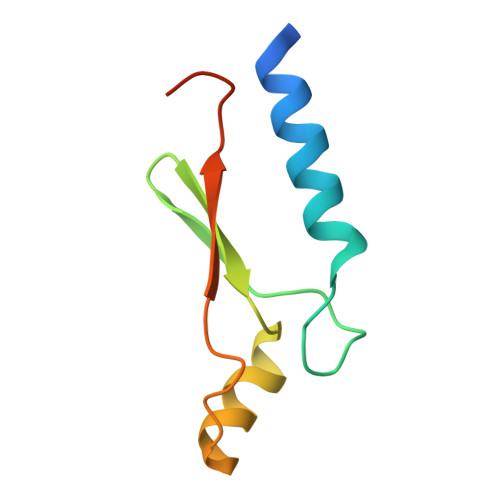A synthetic protein selected for ligand binding affinity mediates ATP hydrolysis.
Simmons, C.R., Stomel, J.M., McConnell, M.D., Smith, D.A., Watkins, J.L., Allen, J.P., Chaput, J.C.(2009) ACS Chem Biol 4: 649-658
- PubMed: 19522480
- DOI: https://doi.org/10.1021/cb900109w
- Primary Citation of Related Structures:
3DGL, 3DGN, 3DGO - PubMed Abstract:
How primitive enzymes emerged from a primordial pool remains a fundamental unanswered question with important practical implications in synthetic biology. Here we show that a de novo evolved ATP binding protein, selected solely on the basis of its ability to bind ATP, mediates the regiospecific hydrolysis of ATP to ADP when crystallized with 1 equiv of ATP. Structural insights into this reaction were obtained by growing protein crystals under saturating ATP conditions. The resulting crystal structure refined to 1.8 A resolution reveals that this man-made protein binds ATP in an unusual bent conformation that is metal-independent and held in place by a key bridging water molecule. Removal of this interaction using a null mutant results in a variant that binds ATP in a normal linear geometry and is incapable of ATP hydrolysis. Biochemical analysis, including high-resolution mass spectrometry performed on dissolved protein crystals, confirms that the reaction is accelerated in the crystalline environment. This observation suggests that proteins with weak chemical reactivity can emerge from high affinity ligand binding sites and that constrained ligand-binding geometries could have helped to facilitate the emergence of early protein enzymes.
Organizational Affiliation:
Center for BioOptical Nanotechnology, The Biodesign Institute, Tempe, Arizona 85287-5201, USA.


















